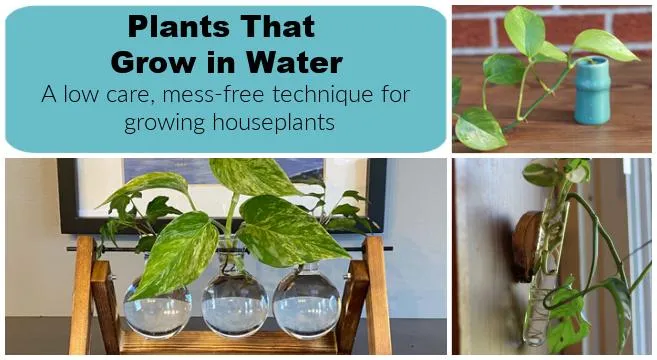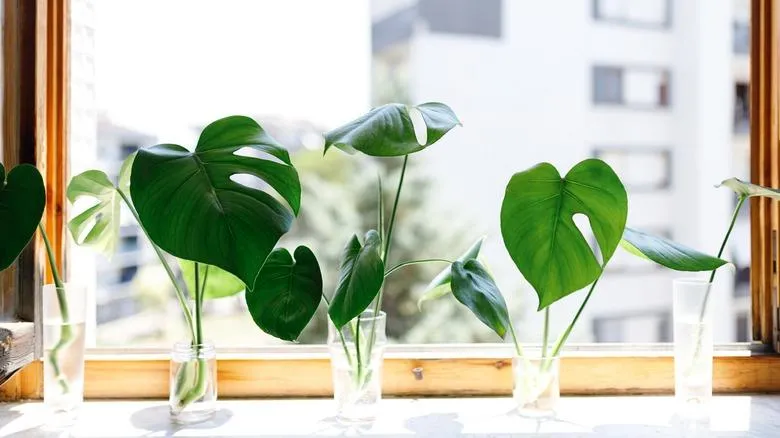Beautiful Blooms for Your Indoor Aquascape: Flowers That Thrive in Water
Have you ever wished you could grow gorgeous flowers indoors without a large garden or outdoor space? Well, believe it or not, there are several types of plants that actually thrive when their roots are submerged in water. Known as hydrophytes or aquatic plants, these flowers are perfectly suited to grow beautifully right in your home.
Why Choose Aquatic Flowers?
- Low maintenance – Once established, water flowers require little care beyond the normal water changes in their container. This makes them perfect for busy schedules.
- Decorative accent – Their unusual habitat sets them apart as striking display pieces that add visual interest to any indoor space.
- All season blooms – Many varieties bloom year-round, providing colors when other plants may be dormant.
- Easy growing – As long as their pots have the right conditions, aquatic flowers basically take care of themselves with minimal effort from you.
From my experience starting many indoor aquatic gardens, the rewards of watching blooms float on the surface more than make up for the minimal startup effort. Plus, caring for living flowers is way more fulfilling than artificial ones!
Top Picks for the Aquarium or Indoor Pond
Here are some of the best options to consider for adding gorgeous flowers to your indoor water feature:
Water Hyacinth (Eichhornia crassipes) – With its lush green leaves and clusters of beautiful lavender-blue flowers, water hyacinth is hard to beat for beauty. It spreads rapidly through runners so keep it confined if growing in a smaller container.
Frogbit (Hydrocharis morsus-ranae) – Resembling little lily pads, frogbit’s small white flowers dotted above the foliage bring a lovely natural charm. It thrives floating lazily on the water’s surface.
Lotus (Nelumbo nucifera) – Nothing compares to the exotic elegance of the lotus. Choose from pink, white or red blooms floating above broad circular leaves. It needs deeper water and warmer temperatures.
Parrot’s Feather (Myriophyllum aquaticum) – With feathery green foliage and small white flowers, parrot’s feather looks fantastic cascading down the sides of your aquatic garden’s pots. Snip stems to encourage bushier growth.

Yellow Loosestrife (Lysimachia nummularia ‘Aurea’) – This low-growing groundcover bears bright golden-yellow flowers above grass-like foliage right at the water line. Its cheerful color brightens any indoor oasis.
Plants like watersprite, moneywort and lizard’s tail round out the selections with subtle blooms and attractive greenery perfect for naturalizing the landscape. Experiment to see which varieties perform best in your setup.
Tips for Growing Aquatic Flowers Indoors
Now that you’ve selected some beauties, here are some pointers for helping them thrive:
– Use a sturdy, water-tight pot at least 10 inches deep filled with substrate like aquarium gravel. This allows roots to anchor in the lower area while stems float on top.
– Provide balanced lighting for 6-8 hours per day, either from a sunny window or grow lights. Added heat may be needed for tropical varieties.
– Change 15-30% of the water weekly to maintain good quality. Filtered, dechlorinated water is best to mimic their natural habitat.
– Measure water parameters to ensure healthy pH, temperature, hardness, and nutrients. You may need to occasionally supplement with liquid fertilizer.

– Trim stems and remove excess foliage or runners periodically to encourage bushy growth and prevent overcrowding.
– Propagate easily by dividing clumps, separating plantlets, or collecting seeds to try different species in your collection.
– In cooler seasons, some varieties may die back but will often resprout in spring from dormant roots or rhizomes with the return of favorable conditions.
With a little attention to their needs, aquatic flowers will basically maintain themselves indoors with minimal effort from you. From my experience growing them, their personalities and seasonal changes bring me endless joy. Why not set some up and see the smiles they bring you too!
Frequently Asked Questions
Do they require special lighting?
Most aquatic flowers thrive best with at least 6 hours of direct or bright, indirect sunlight each day. Under low-light conditions, growth may be sparse. Supplemental grow lights can help if necessary.
What about heating requirements?
Tropical varieties like lotus and water lilies appreciate warmer water temperatures around 70-80°F year-round. Others are quite hardy and withstand most indoor conditions between 60-85°F.
How do I start seeds or reproduce plants?
Collect and sow seeds on the water’s surface when ripe. Also take stem cuttings, divide root balls in spring or collect plantlets from mother plants to multiply varieties. Patience is key as germination and rooting can take time.

Will fish or shrimp harm the flowers?
Generally yes, aquatic pets will likely snack on delicate petals or foliage. It’s best to enjoy flowers separately from stocking a fish tank, unless using a very large container. Certain shrimp or snails may coexist without damage.
What common problems may arise?
Watch for nutrient deficiencies, algae growth, temperature or pH imbalances that stress flowers. Isolate sick plants, change water more frequently, add liquid fertilizer or adjust lighting/heating to remedy conditions as needed. Proper care results in very few issues.
Common Floating Aquatic Plants for Indoor Gardens
| Common Name | Flower Color | Light Needs | Water Temp Range | Care Level |
|---|---|---|---|---|
| Water Hyacinth | Blue, Pink, Purple, White | Bright Light | 65-80°F | Easy |
| Frogbit | White | Bright Light | 60-80°F | Easy |
| Water Lettuce | No Flowers | Bright Light | 65-80°F | Easy |
| Amazon Frogbit | White | Bright Light | 65-80°F | Easy |
| Water Poppy | Yellow, Orange | Bright Light | 60-80°F | Moderate |
FAQ
-
What kinds of flowers grow well in water?
Lots of pretty flowers basically thrive floating in a vase or pot of water. Irises, lilies, and water lilies are amazing aquatic blooms. Some others that work sort of okay are Hyacinths and Tulips, but they don’t last as long submerged as the true water-loving flowers.
-
How do I keep them healthy?
To keep your water flowers stunning, change the water every few days so it stays fresh. You need minerals in the water for nutrients, so put some plant food tablets in the vase. Flowers like it when the water is kind of warm, around room temperature. But don’t let it get too cold!
-
What kind of container works best?
A clear glass vase shows off the blooms and lets light penetrate down for photosynthesis. Nevertheless, don’t use anything metallic which can react with minerals in the water. A ceramic or plastic container also does the trick. The vessel should be at least twice as wide as the diameter of the flower heads to accommodate roots and leaves fully submerged.
-
How long do they last indoors?
It really depends on the variety, but on average water flowers float around 1-2 weeks before starting to wilt. Irises and lilies may hold out over two weeks with TLC. Hyacinths seem to only last 5-7 days despite your best efforts. But is that worth it for such a brief burst of color in your home?
-
Can I grow plants directly in the water?
Sure, some flowers like papyrus,pond lilies and water hyacinths will establish roots underwater and throw out leaves above the surface. You need a fairly deep container at least 8 inches tall filled with nutrient-rich water. It’s amazing to see the transition as greens emerge from the water. These aquatic plants may live for months with proper care.

-
Any tips for photographing water flowers?
Due to refraction, taking close-up photos of blooms floating in water can be tricky. Position the lens just above surface level for a stunning reflection. Use a macro setting or filter if your camera has one. Natural light by a window captures lush colors better than harsh indoor lighting. Play around and don’t be afraid to get experimental – who knows, you may discover an artist within!
